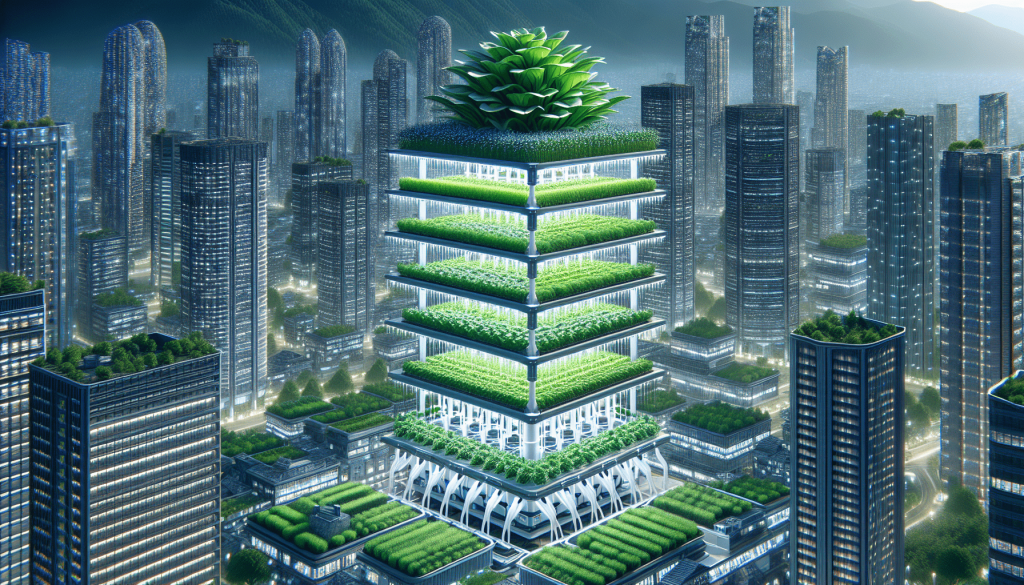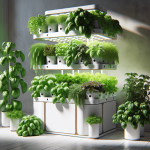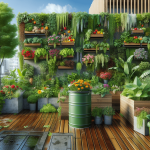This post may contain affiliate links. As an Amazon Associate, we may earn commissions from qualifying purchases.
Have you ever wondered how we can grow more food in less space while conserving resources? It’s a question that has sparked the interest of many, from urban planners to home gardening enthusiasts. The integration of vertical farming and hydroponics offers a promising solution to this query. This approach not only taps into efficient use of space but also promotes sustainability by reducing the consumption of water and soil. Let’s stroll through the garden of possibilities and take a peek at what makes this combination so advantageous.
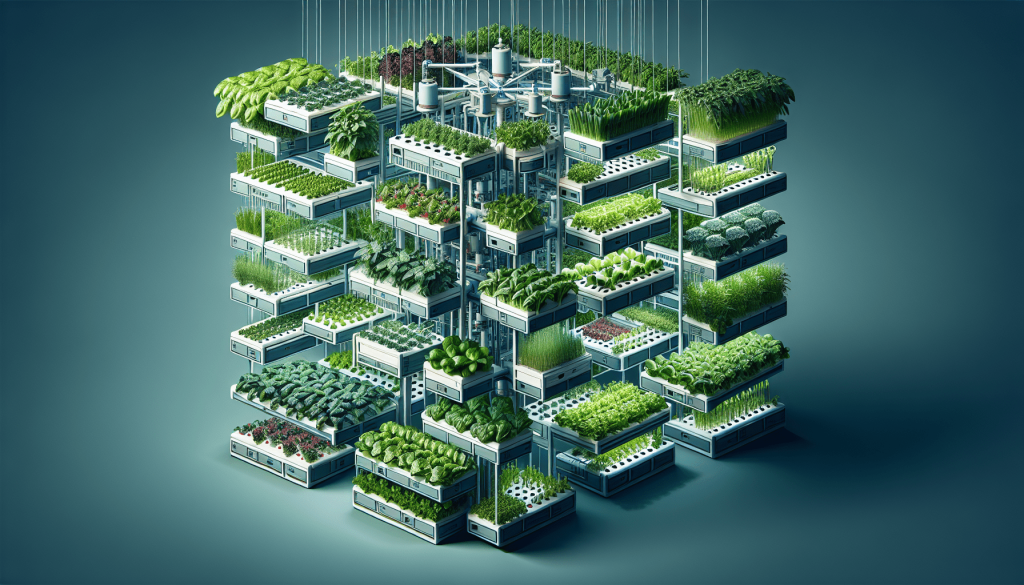
Understanding Vertical Farming
Vertical farming is like a cozy high-rise apartment for plants. It allows you to stack crops in layers, making the most of limited space. Often situated indoors or within urban environments, these farms break away from traditional agricultural methods that require vast swathes of land. This approach is not only about growing upwards; it’s about maximizing efficiency and minimizing resource use.
Why Vertical?
Why stack your plants? The reality is that arable land is dwindling, and urban areas need more sustainable food sources. Vertical farming addresses the issue of limited space by using height, opening up possibilities in cities where land is at a premium. It reduces the ‘food miles’ and brings agriculture into the core of urban areas, thus making fresh produce more accessible.
Types of Vertical Farms
There are different ways to set up a vertical farm depending on the type of system used. Some well-known systems include stacked shelves or towers where plants are cultivated in small amounts of soil or none at all. A few even use aeroponics – a system where plant roots are misted with nutrient-packed water.
Here’s a simple table to summarize:
| Vertical Farm Type | Description |
|---|---|
| Stacked Shelves | Plants grow on horizontal rows of shelves. |
| Vertical Towers | Plants are grown on vertical towers or modules. |
| Aeroponic Systems | Plants are suspended in air, roots misted with nutrients. |
Diving into Hydroponics
Hydroponics offers a soil-free way of farming, in which plants are grown in a nutrient-rich water solution. This method uses less water than conventional agriculture, making it an ideal candidate for areas where water conservation is key. Imagine a plant with its roots floating in a nutrient bath—this is hydroponics in its simplest form.
The Appeal of Hydroponics
Hydroponics caters to a diverse array of plants, allowing them to thrive without soil. By delivering nutrients directly to the roots, hydroponics offers precise control over what your plants receive, potentially enhancing their growth rates and yields.
Varieties of Hydroponic Systems
There are several ways to set up a hydroponic system, each with its unique attributes:
| Hydroponic System Type | Key Features |
|---|---|
| Nutrient Film Technique | A continuous flow of nutrients over plant roots. |
| Deep Water Culture | Plant roots are immersed in oxygenated nutrient solution. |
| Aeroponics | Roots are suspended and misted with nutrients. |
| Wick System | Simplest form; uses wicks to transport nutrients to roots. |
Each type has its benefits and challenges, offering flexibility depending on your needs and spaces.
The Perfect Marriage: Combining Vertical Farming with Hydroponics
When vertical farming marries hydroponics, it’s like witnessing a match made in plant heaven. This integration takes the best of both worlds to create a farming method that’s efficient, sustainable, and resilient.
Space Efficiency
By combining these two methods, you optimize vertical space while reducing the need for soil. This is particularly advantageous in urban settings where every square foot counts. Vertical hydroponic systems can be designed for rooftops, basements, or small interior spaces, making farming feasible where it was once unimaginable.
Water Conservation
Hydroponics is a water-saver’s dream, using as much as 90% less water than traditional farming. When integrated into a vertical system, any runoff can be collected and recirculated, minimizing waste. This makes vertical hydroponic systems an indispensable tool in drought-prone regions.
Controlled Environment
Vertical farms often operate in controlled environments, shielded from pest invasions and climate unpredictabilities. Combining this with hydroponics’ precise nutrient management allows you to cultivate year-round crops, independent of external weather conditions. Such controlled systems can guarantee consistent yields and quality.
Innovation and Technology
Integrating vertical farming with hydroponics invites a wave of technological innovation, from automation to LED lighting, which enhances photosynthesis in plants. Automated systems can monitor and adjust nutrient levels, lighting, and temperature, ensuring optimal growing conditions with minimal manual intervention.
Environmental Impact
The eco-friendly nature of vertical hydroponic systems makes them a strong candidate in the battle against climate change. By producing food locally, these systems cut down transportation emissions and reduce reliance on pesticide-heavy agriculture, making food production more sustainable and less harmful to the planet.
Challenges and Considerations
While integration is beneficial, it’s not without challenges. Understanding and navigating these hurdles can make your vertical hydroponic venture more successful.
Initial Costs
Setting up a vertical hydroponic farm can involve significant initial costs. Equipment, technology, and controlled environment systems require investment, although they tend to pay off with reduced labor, high yields, and efficient production in the long run.
Technical Expertise
Operating a combined system requires a learning curve, especially in balancing nutrient solutions and environmental controls. Familiarizing yourself with the technology and investing in training can mitigate this challenge.
Energy Consumption
While reducing agricultural land use, these systems may increase energy consumption due to lighting and environmental controls. Integrating renewable energy sources like solar panels could be a part of the solution to counteract this usage.
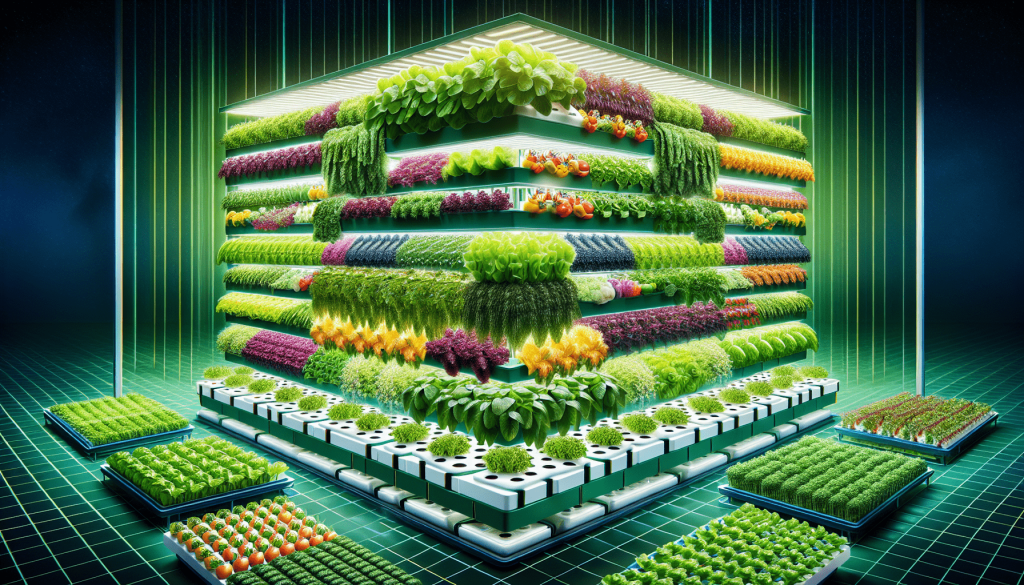
Future Prospects
The combination of vertical farming and hydroponics holds vast potential for the future of agriculture, especially as urban populations continue to grow. As technology advances and sustainability becomes an urgent focus, it’s likely these systems will become more mainstream.
Feeding Urban Populations
With the global shift towards urban living, localized food production is crucial. Vertical hydroponic systems can provide fresh, nutritious food directly to urban centers, reducing the need for transportation and storage.
Innovations on the Horizon
The future could see even smarter systems with advanced AI and machine learning to further enhance plant growth and efficiency. Imagine self-monitoring farms where technological insights drive every growth decision.
Public Perception and Adoption
As people become more aware of the environmental impacts of traditional farming, the demand for locally grown, sustainable produce will rise. Shifting public perception could lead to wider acceptance and adoption of these innovative farming methods.
Conclusion
So what are the benefits of integrating vertical farming with hydroponics? Beyond the novelty lies a blueprint for a future where agricultural innovation meets sustainability head-on. By embracing these methods, you’re not just growing plants but nurturing a vision for a healthier planet and more resilient food systems. Whether you’re a hobbyist or a commercial farmer, this integration offers a beckoning opportunity to contribute positively to our world’s food future. May your next green venture be as plentiful as it is promising!
